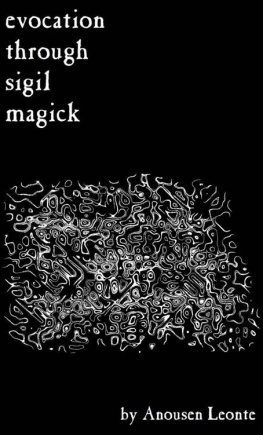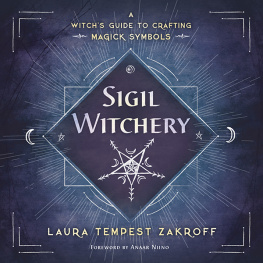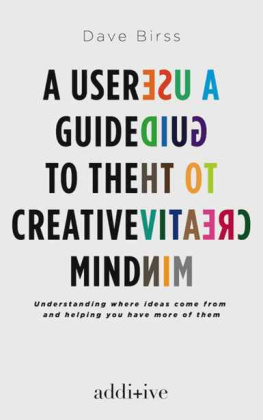Dave Heiland - Sigil User Guide
Here you can read online Dave Heiland - Sigil User Guide full text of the book (entire story) in english for free. Download pdf and epub, get meaning, cover and reviews about this ebook. year: 2012, genre: Computer. Description of the work, (preface) as well as reviews are available. Best literature library LitArk.com created for fans of good reading and offers a wide selection of genres:
Romance novel
Science fiction
Adventure
Detective
Science
History
Home and family
Prose
Art
Politics
Computer
Non-fiction
Religion
Business
Children
Humor
Choose a favorite category and find really read worthwhile books. Enjoy immersion in the world of imagination, feel the emotions of the characters or learn something new for yourself, make an fascinating discovery.
- Book:Sigil User Guide
- Author:
- Genre:
- Year:2012
- Rating:4 / 5
- Favourites:Add to favourites
- Your mark:
- 80
- 1
- 2
- 3
- 4
- 5
Sigil User Guide: summary, description and annotation
We offer to read an annotation, description, summary or preface (depends on what the author of the book "Sigil User Guide" wrote himself). If you haven't found the necessary information about the book — write in the comments, we will try to find it.
Sigil User Guide — read online for free the complete book (whole text) full work
Below is the text of the book, divided by pages. System saving the place of the last page read, allows you to conveniently read the book "Sigil User Guide" online for free, without having to search again every time where you left off. Put a bookmark, and you can go to the page where you finished reading at any time.
Font size:
Interval:
Bookmark:
Regex Reference
This tutorial is basically a quick reference for Regex. You should read first as an introduction to Regular Expressions.
Regex is a very powerful way for you to edit and cleanup your EPUB when using Find & Replace. However, when you first start using regex it can be confusing because there are a lot of commands you can use. This is a brief summary of some basic regex commands.
You can find more details about regex at these links (or ask for help in the Sigil forum):
- Regex overview at MobileRead
- A one page command summary
- Regex as used by Python
- Official PCRE details start at the PCRESYNTAX(3) section
When using regex commands in Find & Replace the purpose is to allow you to search for patterns instead of exact text. This means that you can tell Find & Replace to search for "a number" instead of "8", or to match any words between certain tags and then replace it with new tags or new words.
In order to allow you to search for patterns, you need to use regex commands in place of the specific text you want in your search. For instance, instead of searching for you could search for \d (which means one digit) or \d+ (which means one or more digits).
An example Find & Replace command using regex might be to change all level 1 headings to level 2 headings:
- Find:
- Replace:
where the Find command searches for any text between the h1 start and end tags, and using () to save the text. (The start tag is left open in order to catch any class definitions, and the ? tells .* to do minimal matching). The Replace command is used to replace the matched text with the saved text (indicated by \1) surrounded by the h2 start and end tags.
The following sections give a sample of common regex commands that you may find useful.
You can put these commands at the start of any regex to modify how the expression behaves:
- (?s) search across lines when using .* since by default .* only matches within a line of text.
- (?U) match the first occurrence of your string (also called minimal or ungreedy matching). This is very useful when using .* to avoid matching too much.
- (?i) ignore case when matching.
You can combine modifiers, e.g. (?sU) is commonly used.
You can use these regex commands to represent single characters:
- . matches one character
- \d match one digit
- \t match one tab
- [abc] any character that is a b or c
- [^abc] any character that is NOT a b or c
- [0-9] any digit from 0 to 9
- [:alpha:] any letter, upper or lower case
- [^:alnum:] any character that is NOT a digit or upper or lowercase letter
These regex quantifiers or codes allow you to represent multiple characters:
- * use after a character to mean 0 or more, e.g. .* means 0 or more of any character
- + use after a character to mean 1 or more, e.g. \d+ means 1 or more digits
- ? use after a character to mean 0 or 1 instance, e.g. \d? means none or 1 digit
- \s matches whitespace, including space, tab, end of line carriage returns or newlines
And there is a special character that tells your search to stop at the first match it finds instead of the largest match which you can use instead of the general modifier (?U) :
- ? use after a quantifier to do a minimal search, e.g. .*? or \d+?
In some cases you need to group your expressions together so that, for example, you can save them for a later replace, or to indicate a choice of words:
- (atext|btext) atext or btext
- (group) group the words together for later retrieval you can use multiple groups
When replacing text, one of the most useful features is to be able to use text that was matched by storing it in a group. Once you have grouped text you can reference it in your replace command:
- \1 use in Replace to retrieve the value of a saved group (use \2 for the second group, etc.)
Formatting with Style
This tutorial describes stylesheets and how to use them in your EPUB.
A stylesheet (or CSS Cascading Style Sheet) is a list of instructions that tells ereaders how to display the text in your book. More specifically it tells the ereader how to style text in HTML tags used in your book. Understanding and using CSS is the best and most flexible way to layout your book exactly as you want.
You can find other introductions to CSS online, including:
- W3Schools CSS Guide
And if you really need to dig into the details, the CSS2 technical specification is available:
- CSS 2.1 Specification
Using CSS can get quite complicated, but if you become familiar with the basics it will make it much easier to understand why your book looks the way it does and how to modify its layout.
This chapter assumes you are familiar with Code View since you need to use Code View to see the details of styles.
Styles are used in a book to say things like make this text blue, or make text centered, or leave a little more space above this text. A style definition is just text that looks like:
color: blue;which says make the color of the text blue.
But styles aren't very useful unless they are applied to something. In the case of an EPUB styles are applied to the HTML elements in your document, like p (paragraphs), h1 (level 1 headings), div (divisions), span (spans), etc.
There are 3 ways styles can be used for HTML tags in an EPUB:
- Style Attribute: a style applied directly to one specific HTML element in the document
- Style Element: a group of styles in one document that can only be used by that document
- Stylesheet: a separate CSS or stylesheet file that can be used by many HTML files
A separate stylesheet file is the recommended way to use styles. The descriptions below of each approach will help you understand why.
To apply a style directly to an HTML tag, you can use the style attribute in the tag. For example, to apply the style color: blue to a paragraph you would change
Hello
to:
Hello
In fact this is exactly what Book View does when you select the buttons to make text Bold, Italic, Underline, etc., only in this case it will usually use the span tag, e.g.
bold textThis works perfectly well if you just want to change a few things and rarely update the formatting. But if you later want to change from using bold to italic for certain words then you will have to edit every place in the book that set the specific style.
Styles attributes are rarely used unless they were created by software doing an automatic conversion or update and should be avoided.
There is a much better way to manage styles: using style selectors.
A style selector is a way to give a particular style a name, and then use the style in the document just by referring to its name. More specifically the style selector is used to select which elements in your document should use the style you define.
For example, if you wanted to style all paragraphs in your EPUB to be centered, you could define a rule for a style selector as follows:
p { text-align: center;}This defines a style selector p that will match (or select) all paragraph elements.
You can control which tags get selected by modifying the selector. One of the most popular ways to select specific tags is by using a class name. This is just a name that you choose (like "firstparagraph" or "centeredtext") to give to your tags.
Font size:
Interval:
Bookmark:
Similar books «Sigil User Guide»
Look at similar books to Sigil User Guide. We have selected literature similar in name and meaning in the hope of providing readers with more options to find new, interesting, not yet read works.
Discussion, reviews of the book Sigil User Guide and just readers' own opinions. Leave your comments, write what you think about the work, its meaning or the main characters. Specify what exactly you liked and what you didn't like, and why you think so.










